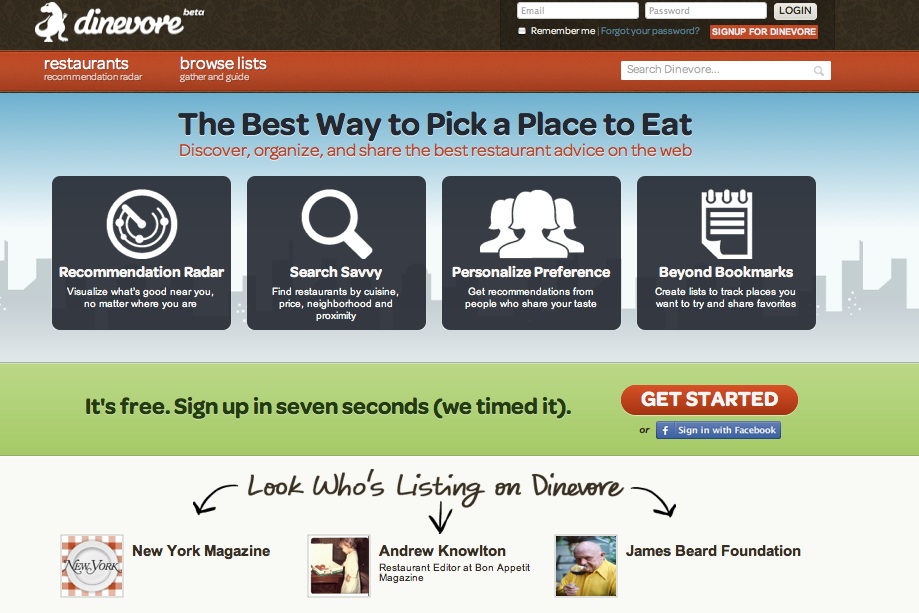The Internet has allowed for a democratization of ‘the expert.’ Restaurants and consumers must contend with the newly empowered voices of authority, whose feedback gets shared through channels such as Yelp, Menu Pages, Urbanspoon, Foursquare, Twitter, Blog posts, and more. But how do you vet the expert?
Dinevore attempts to solve this problem by helping you determine whose recommendations you trust. Users create their own lists of restaurants or follow other people’s lists. When you search for a restaurant, results are narrowed down to establishments appearing on the lists you follow. You are also able to filter your search by neighborhood, price, and cuisine. Dinevore’s approach assumes that it’s the recommendation you can trust you are looking for, rather than the extensive review.
Whether it’s restaurants or other topics such as politics or public health, the opinion deluge is not likely to slow down any time soon. Dinevore is part of a growing number of startups that leverage technology to help us curate, personalize, optimize, and, I would argue, democratize the way we process information, by allowing us to easily connect with people that have similar interests or tastes. I get excited about the model the site creates for for both businesses and users. My personal hope is that it helps to foster a paradigm shift that empowers us to demand and create these kind of curation opportunities throughout different areas of our lives.
Continue reading to learn more about Dinevore and it’s new features from founder Jeremy Fisher. Check out this video of Fisher from the Product Meetup group to learn more about his interesting UX approach.
—
Danielle Gould: What’s the inspiration behind Dinevore?
Jeremy Fisher: Having Sam Sifton on speed dial or being willing to spend hours researching restaurants online shouldn’t mean you eat better than everyone else. I wanted to level the playing field for people picking a place to eat.
DG: How do you think you are innovating the restaurant search experience? What features in particular set you apart from sites such as Yelp?
JF: We like to say that too many cooks in the kitchen spoils the broth. That’s what’s happened online. What sets Dinevore apart is the ability to cut through that noise and get recommendations from people and publications you trust.
We’re the only place to get professional and social content in the same place. The latest New York Times review? We’ve got it. Your friend John’s list of outer borough gems? We’ve got that too. The social, user-generated portion of Dinevore is focused entirely on recommendations, not reviews. Recommending is a pervasive, natural phenomenon. Literally everyone does it. But when was the last time you called a friend and asked them to write a restaurant review of their favorite place for you?
DG: You just launched a redesign of the website. Could you tell us about some of the new features?
JF: Following users has become much more important, and it’s the centerpiece of what we’re calling the Recommendation Radar. Your radar is a feed of all the places recommended by all the people, publications and brands that you follow. We let you sort your radar by distance from an address, or limit its results by a specific cuisine, price or neighborhood.
DG: You have a pretty substantial number of lists from premier food experts and publications. Why do you think they are so active?
JF: Dinevore’s completely free to use, and it surfaces branded content to consumers at the most contextually relevant moments, so that’s a pretty great value proposition from the brand perspective.






